Refugees on Calais
Drawing 13 × 16cm Tracing paper 2014
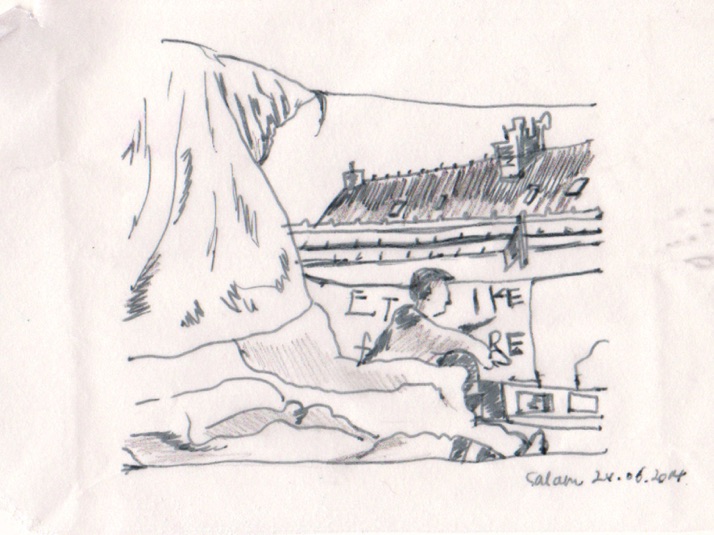
Refugees on Calais
Drawing 13 × 16cm Tracing paper 2014
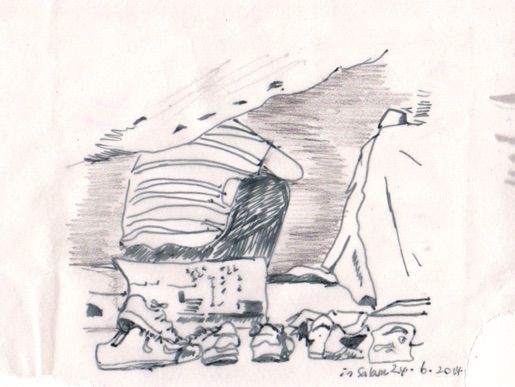
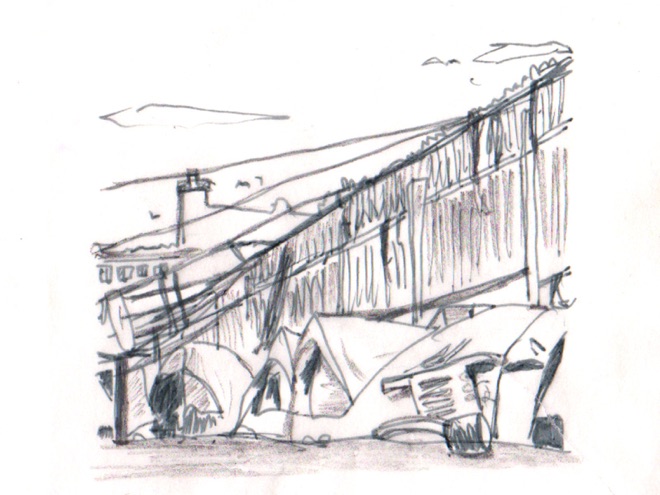

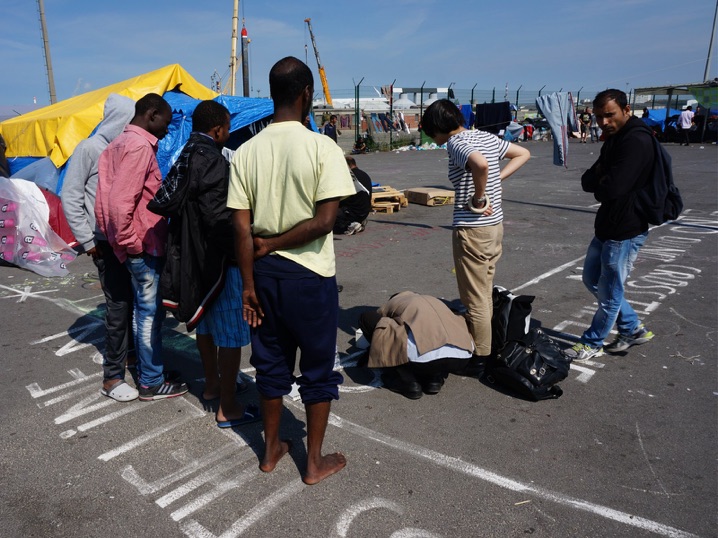

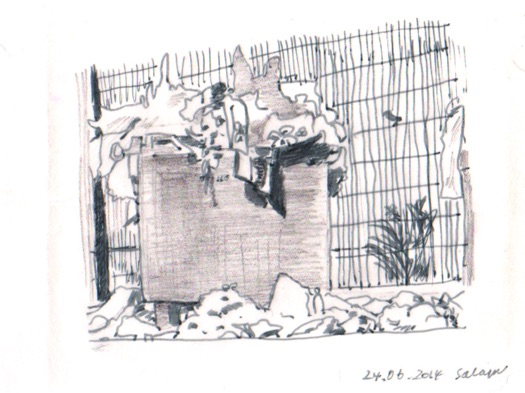
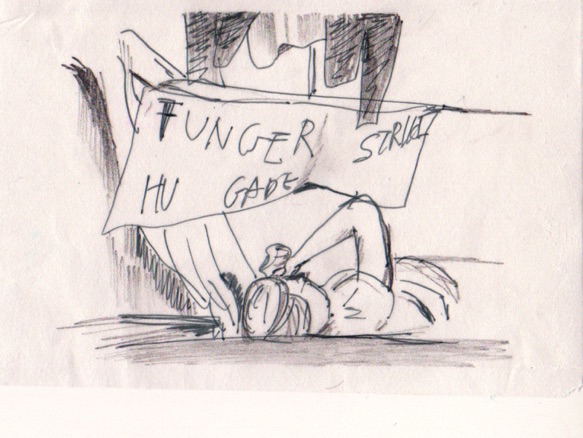
The Daily Life of Calais
About “SALAM”
“Salam” is the name of the camp where some of the refugees are on hunger strike. Furthermore, some refugees live there full-time. I went to Salam everyday, and I recorded what I saw using a “Camera Obscura.” Some people living in Salam do not like to be recorded on film which influenced my decision to employ the Camera Obscura as a less intrusive technology.* The Camera Obscura is an optical device that projects an image of its surroundings on a screen; I use this projection to make a drawing.
The refugees came to me, while I was recording images of Salam, and they asked me “What is that? Can I look it?” We made communication through the Camera Obscura, and I recorded the appearance of Salam. The communication with the Camera Obscura gave me a very interesting experience.
What struck me was the encounter with one particular man.
One day while recording in Salam, I met a man who was part of the hunger strike. He told me about many experiences of his stay in the Salam camp. I remember two impressive things from our conversation:
First - “Human Rights”
The man had lost so much weight since the start of the hunger strike. I could not understand how he could continue the hunger strike because the police and the French government didn't care about it. I asked him: “How can you continue the hunger strike? Are you convinced that the situation will change by doing it?”
*Looking back, the question was so stupid for him. I could not imagine the concept of the people who are on the hunger strike, because I have never seen a hunger strike in Japan.
He answered my, perhaps naive question: “For human rights!” I was shocked by the answer. Throughout all the complicated political contexts, he just needed his rights. He also knows that the French government doesn’t care about them. I heard another unbelievable story from him: the police sometimes hit the refugees. For example, one day a refugee walking out from Salam was stopped by the police, and then forced to fight with them in a boxing match on the streets. He could not say: “no”, because they were police officers. I saw the scars on some refugees faces and foreheads. The man on hunger strike said: “the police don’t care about us.” At that moment, I saw the violence and the power dynamics of the situation.
Second - “How can you help us?”
The man on hunger strike said that he gave many interviews with journalist from abroad. This is because, he really wants the situation in Calais to become published more widely. He said: “to inform is the first step to change the situation.” I agree with him. And that was the plan for me, too. However, the man also said “almost all journalists and media just came here, and talked with us, and went back to their safe land. They just report the situation, but our situation has not changed yet. We need concrete help. I am tired of just talking about us with them. Well, how can you help me? Do you have a concrete idea for this situation?” I got a shock here, because I recognised that I have no concrete ideas for them, and furthermore, the refugees have no concrete ideas either. They think that we should help them.
In addition, here, I would like to mention the issue of media and awareness, which is also familiar to me from Japan.
After the massive 2011 earthquake in Japan, which caused a tsunami and the disaster at the Fukushima power plant, I have been trying to get involved in criticism against mass media with my art practice. I recognised that in Japan mass media exerts a powerful influence over public opinion, but there is a lack of media criticism especially in regards to the independence of media organisations from political parties. Japanese mass media exercises a monopoly over domestic news coverage that traps Japan in the world where nobody knows the truth. Under the this situation, photography remains the most important medium in Japanese media coverage, and the supremacy of the photograph as “truth” brings us back to this problem of the conceptual overshadowing perception.
Looking back, I might have resisted the above situation of Japan by using the Camera Obscura. I also might dislike making photos of the refugees with a digital camera. How will more pictures help if the media context is still so problematic? It is clear, I have been feeling hatred toward the consumption of meaningless photographic images 2011. So many generic photographs merely desensitise us- and this is an ongoing problem.
Artistic Research Project
Drawings painted by using a camera obscura
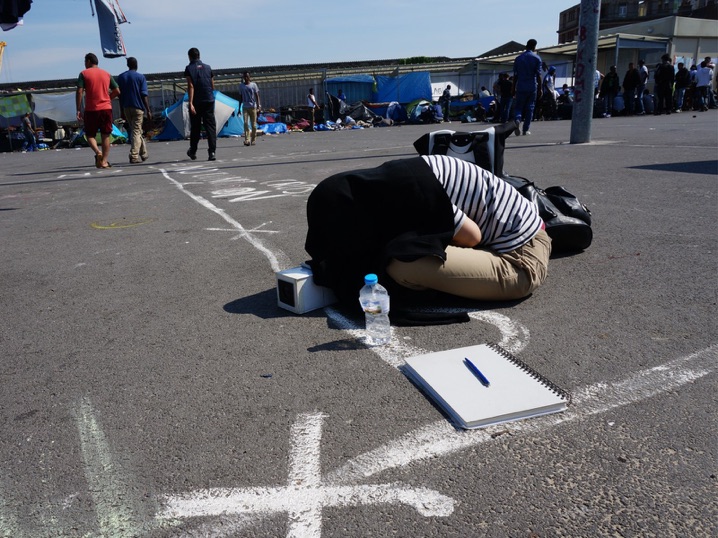




Refugees on Calais (2014)

